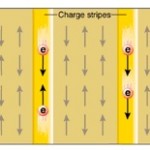Carriers that count An exactly solvable model for superconductivity includes two crucial features of the cuprates and sheds light on unexplained experiments. Nature Physics, Jul. 2020
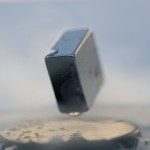 Paradox in superconductivity at high temperature Superconductivity is a bizarre but useful physical phenomenon. Nature publishes an article on a paradoxical discovery in superconductivity. Leiden physicist Jan Zaanen writes a News & Views article about this in the same issue of August 19th. Nature, Vol.536,
Paradox in superconductivity at high temperature Superconductivity is a bizarre but useful physical phenomenon. Nature publishes an article on a paradoxical discovery in superconductivity. Leiden physicist Jan Zaanen writes a News & Views article about this in the same issue of August 19th. Nature, Vol.536,
Electrons go with the flow in exotic material systems 
High temperature superconductivity: Electron mirages in an iron salt The detection of unusual ‘mirage’ energy bands in photoemission spectra of single-atom layers of iron selenide reveals the probable cause of high-temperature superconductivity in these artificial structures. Nature Vol. 515, 2014
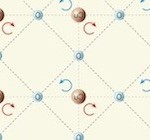 The sound of a hidden order Ultrasound measurements in a copper oxide superconductor have revealed an exotic phase of matter, composed of loops of spontaneous quantum currents, that has hitherto excelled at evading observation. Nature, Vol. 498, June 2013
The sound of a hidden order Ultrasound measurements in a copper oxide superconductor have revealed an exotic phase of matter, composed of loops of spontaneous quantum currents, that has hitherto excelled at evading observation. Nature, Vol. 498, June 2013
Holographic duality: Stealing dimensions from metals Although electrically charged black holes seem remote from superconductors and strange metals in the laboratory, they might be intimately related by the holographic dualities discovered in string theory. Nature Physics Vol.9, Aug 2013
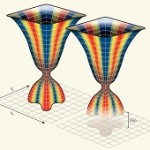 The secret of the hourglass The finding that a cobalt oxide insulator’s magnetism is similar to that of cuprate superconductors lends support to the popular but contentious idea that stripe-like electronic order is present in the latter materials. Nature Vol. 471, 2011
The secret of the hourglass The finding that a cobalt oxide insulator’s magnetism is similar to that of cuprate superconductors lends support to the popular but contentious idea that stripe-like electronic order is present in the latter materials. Nature Vol. 471, 2011
The benefit of fractal dirt Measurements of X-ray diffraction on small patches of a copper oxide superconductor reveal that oxygen crystal defects form fractal structures that seem to promote high-temperature superconductivity. Nature Vol. 466, 2010
Journalclub: quantum criticality versus string theory A theoretical physicist journeys to a hairy black hole’s horizon. Nature Vol. 462, 2009
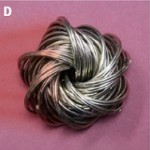 Fast Electrons Tie Quantum Knots Special relativity and quantum physics combine to generate unusual arrangements of electron spins in two different solids. Science Vol. 323, 2009
Fast Electrons Tie Quantum Knots Special relativity and quantum physics combine to generate unusual arrangements of electron spins in two different solids. Science Vol. 323, 2009
The pnictide code Hopes are that the emergent family of iron-based superconductors, the pnictides, could act as a Rosetta stone in decoding the two-decade mystery of superconductivity observed at high temperatures. Prof. Zaanen comments in Nature Vol. 457, 2009
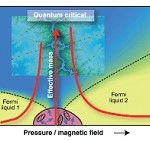 Quantum Critical Electron Systems: The Uncharted Sign worlds This perspective by Prof. Zaanen addresses the Fermion sign problem and describes experiments on metals undergoing quantum phase transitions exhibiting scale-invariant electronic behavior, a description of which is at odds with established quantum theory. Science Vol. 319, 2008
Quantum Critical Electron Systems: The Uncharted Sign worlds This perspective by Prof. Zaanen addresses the Fermion sign problem and describes experiments on metals undergoing quantum phase transitions exhibiting scale-invariant electronic behavior, a description of which is at odds with established quantum theory. Science Vol. 319, 2008
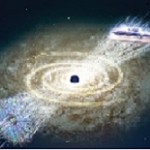 A black hole full of answers A facet of string theory, the currently favoured route to a ‘theory of everything’, might help to explain some properties of exotic matter phases —such as some peculiarities of high-temperature superconductors. Nature Vol. 448, 2007
A black hole full of answers A facet of string theory, the currently favoured route to a ‘theory of everything’, might help to explain some properties of exotic matter phases —such as some peculiarities of high-temperature superconductors. Nature Vol. 448, 2007
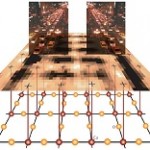 Watching Rush Hour in the World of Electrons An improved imaging technique reveals that electrons in a material can suffer gridlock like cars in a city. This may help researchers understand the mechanism by which currents flow without resistance in superconductors. Science Vol. 315, 2007
Watching Rush Hour in the World of Electrons An improved imaging technique reveals that electrons in a material can suffer gridlock like cars in a city. This may help researchers understand the mechanism by which currents flow without resistance in superconductors. Science Vol. 315, 2007
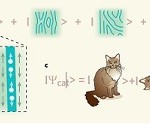 Quantum stripe search Do quantum stripes exist or not? Further indirect evidence for this controversial behaviour of electrons in high-temperature superconductors comes from measurements of atomic-lattice vibrations. Nature Vol. 440, 2006
Quantum stripe search Do quantum stripes exist or not? Further indirect evidence for this controversial behaviour of electrons in high-temperature superconductors comes from measurements of atomic-lattice vibrations. Nature Vol. 440, 2006
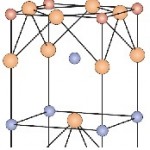 Technology meets quantum criticality Superconductivity and antiferromagnetism are in fi erce competition in high temperature superconductors. However, this competition has the unexpected benefit that the antiferromagnetism improves the capacity of the superconductormagnetic fields. Nature Materials Vol. 4, 2005
Technology meets quantum criticality Superconductivity and antiferromagnetism are in fi erce competition in high temperature superconductors. However, this competition has the unexpected benefit that the antiferromagnetism improves the capacity of the superconductormagnetic fields. Nature Materials Vol. 4, 2005
Journalclub: Penrosian gravitational wavefunction collapse Prof. Zaanen comments in a journal club on the The Road to Reality in which the distinguished mathematical physicist Roger Penrose argues that the limit of quantum rules is rooted in a physicist’s nightmare: the deep conflict between quantum mechanics and Einstein’s general theory of relativity. Nature Vol.436, 2005
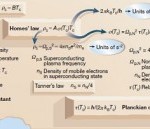 Why the temperature is high According to a new empirical law, the transition temperature to superconductivity is high in copper oxides because their metallic states are as viscous as is permitted by the laws of quantum physics. Nature Vol. 430, 2004
Why the temperature is high According to a new empirical law, the transition temperature to superconductivity is high in copper oxides because their metallic states are as viscous as is permitted by the laws of quantum physics. Nature Vol. 430, 2004
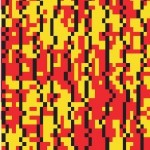 Stripes defeat the Fermi liquid Prof. Zaanen wrote a comment about the mysterie of High-temperature superconductivity. Nature Vol. 404, 2004
Stripes defeat the Fermi liquid Prof. Zaanen wrote a comment about the mysterie of High-temperature superconductivity. Nature Vol. 404, 2004
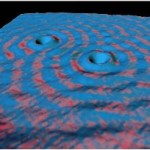 Pebbles in the nodal pond Rippling patterns of electron waves in a copper oxide match the expectation for a certain kind of excitation — another step towards understanding why copper oxides superconduct at far higher temperatures than other materials. Nature Vol. 422, 2003
Pebbles in the nodal pond Rippling patterns of electron waves in a copper oxide match the expectation for a certain kind of excitation — another step towards understanding why copper oxides superconduct at far higher temperatures than other materials. Nature Vol. 422, 2003
Quantum salad dressing The mystery of how electrons in a high-temperature superconductor flow without resistance grows deeper. New pictures at the atomic scale reveal two electronic phases that — like oil and vinegar — do not easily mix. Nature Vol. 415, 2002
Self-Organized One Dimensionality Prof. Zaanen reports on some unusual electronic properties of fully developed stripes, providing novel clues on the physics behind superconductivity. Science, Vol 286 1999


